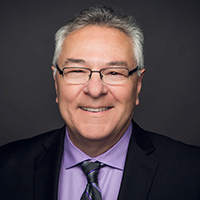Are You Really Ready for a DIY Retirement Plan?
See if you have what it takes by answering a few questions.


We live in a do-it-yourself world.
Want to paint your house, fix your car, learn to dance or to play the guitar? Just go online, and you’ll find all the advice you ever could want.
And so it is with retirement planning. If you search that term on YouTube alone, you’ll get nearly 300,000 results.

Sign up for Kiplinger’s Free E-Newsletters
Profit and prosper with the best of expert advice on investing, taxes, retirement, personal finance and more - straight to your e-mail.
Profit and prosper with the best of expert advice - straight to your e-mail.
So, sure, you can DIY your retirement, just like anything else. But because you can doesn’t mean you should. Here are some things to consider if you’re thinking of going it alone:
1. How good are you at establishing goals? This is a biggie, and most people skip right over it. They have no clue what they want to do when they retire, and they have no idea how much money they’ll need to do it. Often, their retirement plan doesn’t go any further than, “I’m going to sleep late.” But you’ll need to decide what kind of lifestyle you’ll want, what your budget will be and where that money is going to come from.
2. How much do you know about your current investments? If you have a handle on what you already have – what’s in your 401(k) and any other accounts – that’s a good start. But you’ll also have to decide what you’ll do with that money once you retire (considering tax consequences and inflation, among other things). And you should know why you are investing: Is it for income, for growth or both?
3. Are you willing to do the work required to do your own investing? You’ll need extensive knowledge about the companies you’re buying stock in, and you’ll want to know what’s in any mutual funds you purchase. You have to consider what those companies’ financials are, what their price to earnings ratios are, and what their debts are. You’ll have to stay on top of national and international news, too, so you can gauge any political ramifications if those companies do business overseas, or if they’re being sued or have a product or PR move that’s a failure.
You’ll also need to know how to analyze the data you’ve collected to make wise decisions. Is that what you want to do instead of golfing or relaxing with a glass of lemonade?
4. Do you know what kind of investor you are? Are you conservative, moderate or aggressive? Or, to put it another way, how much money are you willing to lose? You’ll have to make that call when building your portfolio, then trust yourself to stick to your plan. Because there will be times when your predictions will be wrong. And your emotions – particularly greed and fear – will cause you to second-guess yourself. We’re all tolerant of risk when we’re making money, but not so much when we’re watching it disappear. Remember, the income that comes from your investments will have to last the rest of your life.
There always will be a DIY crowd. I meet these folks all the time. And over the years, I’ve found there are a few basic reasons why they make that choice.
- Some people just don’t trust financial professionals. (In most of those cases, they don’t trust many other professionals, either.)
- Others truly take an interest in investing and believe they can do it better themselves.
- And there’s also a significant number of people who are intimidated or even embarrassed to talk to someone about their financial situation. They’ve been taught that it’s something to keep private, or they’ve let it get so out of hand, they’re sure we’ll laugh or scold them or simply turn them away.
If you’re hesitant to work with a professional, my recommendation is to meet with an adviser whom a close friend trusts and see how it goes. Usually, it doesn’t cost anything for an initial meeting.
Here’s the thing: You can still have a pro repaint your house if you screw it up. You can get a mechanic to fix your car. You can give up on the guitar if that doesn’t work out, and you can beg your friends not to post their videos of you dancing on Facebook.
But you can’t get your nest egg back if you fail as your own retirement planner.
Kim Franke-Folstad contributed to this article.
Get Kiplinger Today newsletter — free
Profit and prosper with the best of Kiplinger's advice on investing, taxes, retirement, personal finance and much more. Delivered daily. Enter your email in the box and click Sign Me Up.

Charles Ragonese is president of Mountain Peak Financial Inc., which he founded in 1992. He is a licensed insurance agent and has passed the Series 65 exam and is an investment adviser representative in California. Ragonese also holds the designations of Chartered Retirement Planning Counselor (CRPC) and Certified Fund Specialist (CFS), and is a member of the National Association of Insurance and Financial Advisors (NAIFA). Mountain Peak Financial, Inc. focuses on retirement planning. Investment advisory services offered only by duly registered individuals through AE Wealth Management LLC (AEWM). AEWM and Mountain Peak Financial Inc. are not affiliated companies.
-
 Before You Invest Like a Politician, Consider This Dilemma
Before You Invest Like a Politician, Consider This DilemmaAs apps that track congressional stock trading become more popular, investors need to take into consideration some caveats.
By Ryan K. Snover, Investment Adviser Representative
-
 How to Put Together Your Personal Net Worth Statement
How to Put Together Your Personal Net Worth StatementNow that tax season is over for most of us, it's the perfect time to organize your assets and liabilities to assess your financial wellness.
By Denise McClain, JD, CPA
-
 Before You Invest Like a Politician, Consider This Dilemma
Before You Invest Like a Politician, Consider This DilemmaAs apps that track congressional stock trading become more popular, investors need to take into consideration some caveats.
By Ryan K. Snover, Investment Adviser Representative
-
 How to Put Together Your Personal Net Worth Statement
How to Put Together Your Personal Net Worth StatementNow that tax season is over for most of us, it's the perfect time to organize your assets and liabilities to assess your financial wellness.
By Denise McClain, JD, CPA
-
 Bouncing Back: New Tunes for Millennials Trying to Make It
Bouncing Back: New Tunes for Millennials Trying to Make ItAdele's mournful melodies kick off this generation's financial playlist, but with the right plan, Millennials can finish strong.
By Alvina Lo
-
 Financial Steps After a Loved One's Alzheimer's Diagnosis
Financial Steps After a Loved One's Alzheimer's DiagnosisIt's important to move fast on legal safeguards, estate planning and more while your loved one still has the capacity to make decisions.
By Thomas C. West, CLU®, ChFC®, AIF®
-
 Two Don'ts and Four Dos During Trump's Trade War
Two Don'ts and Four Dos During Trump's Trade WarThe financial rules have changed now that tariffs have disrupted the markets and created economic uncertainty. What can you do? (And what shouldn't you do?)
By Maggie Kulyk, CRPC®, CSRIC™
-
 I'm Single, With No Kids: Why Do I Need an Estate Plan?
I'm Single, With No Kids: Why Do I Need an Estate Plan?Unless you have a plan in place, guess who might be making all the decisions about your prized possessions, or even your health care: a court.
By Cynthia Pruemm, Investment Adviser Representative
-
 Most Investors Aren't as Diversified as They Think: Are You?
Most Investors Aren't as Diversified as They Think: Are You?You could be facing a surprisingly dangerous amount of concentration risk without realizing it. Fixing that problem starts with knowing exactly what you own.
By Scott Noble, CPA/PFS
-
 Will My Children Inherit Too Much?
Will My Children Inherit Too Much?If you worry about how your children will handle an inheritance, you're not alone. Luckily, you have options — from lifetime gifting to trusts — that can help.
By Mallon FitzPatrick, CFP®, AEP®, CLU®